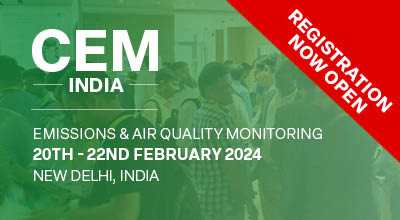| Abstract Title: | The Environment Agency Abu Dhabi’s Use of Automated Monitoring Systems (AMS) |
| Session Choice: | Real-time data acquisition and use for compliance check |
| Presenter Name: | Ms Ruqaya Mahmoud Mohamed |
| Co-authors: | Ms Mouza Ismail Al Zaabi Mr Sultan Mallick Mr Alan Leonard |
| Company/Organisation: | Abu Dhabi Environment Agency |
| Country: | United Arab Emirates |
Abstract Information :
The Environment Agency Abu Dhabi’s Use of Automated Monitoring Systems (AMS) The Environment Agency Abu Dhabi (EAD) is introducing a system of e-linking that collects near real time data directly from AMS for monitoring of emissions from regulated industrial processes in Abu Dhabi. AMS includes, continuous emission monitoring systems (CEMS), predictive emission monitoring systems (PEMS) and simplified predictive emission monitoring systems (SPEMS – includes the use of emission factors). These regulated industries include power, chemical and waste sectors mainly. The aim is to build an integrated data system, which must be a smart and powerful emission analytics solution, centralized databased system in EAD as well as establishing manual reporting mechanisms for facilities without CEMS. The e-linking project will enable EAD to develop a comprehensive database based on real-time data that will be used to 1- Support in development of a comprehensive air quality data management and information dissemination solution(system) for use in supporting EAD’s environmental regulatory compliance and emergency response programs and future emission modeling and cumulative impact assessments. 2- Rapid identification of the stack’s emission concentration levels in Abu Dhabi. 3- Proper identification of pollution sources and the implementation of appropriate mitigation control strategies as part of EAD’s regulatory compliance program to reduce the impacts from these sources. 4- Determination of long-term emission trends and the effectiveness of pollution control strategies for meeting UAE National Air Quality Standards, regulatory decisions and government approaches and visions. 5- Support automation of data collection process and reporting mechanism and reduction in time spent producing reports through streamlined reporting of emission. The e-linking system is designed with several approaches to making connections with negligible or no investments from facilities and provide flexibilities to the entities. Enabling data collection from installed systems without disruption to industries or existing technological capabilities. Although this approach connects and enables data to be collected near real time, there are limitations. The project is built to support long-term objectives and move to a ‘best practice approach’. This was identified in phase one gap analysis which was considered a foundation for developing this e-linking project and involved. • Reviewing emissions monitoring practices around the world- e.g., EU, USA etc. • Reviewing how regulators implement and utilize e-linking systems – examples reviewed included India, Malaysia, South Korea, and regions in the EU. In addition, a critical step to achieve project objectives involved EAD working with industries to develop systems that follow this ’best practice’ approach. This is supported by the development of technical guidance documents, face-to-face meetings and engagements and focused guidance in environment protection. The process of linking involves communications with the site to explain the options for e-Linking their AMS data and freedom to select their preferred option, after which the selected option is developed for the facility to initiate e-Linking. In conjunction with this a site audit and questionnaire completion survey are undertaken to review the process, installation, type of CEMS and the QA/QC procedures adopted. This information is used to develop a site development plan to work towards ‘best practice’.



